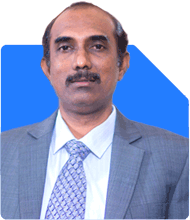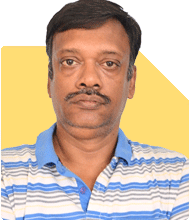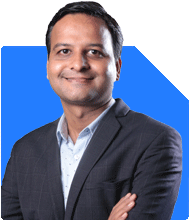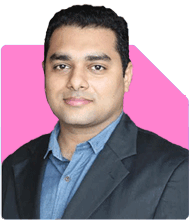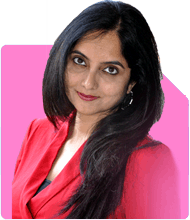Ramalingam Kalirajan |10870 Answers |Ask -Follow
Mutual Funds, Financial Planning Expert - Answered on Jul 01, 2024
He has an MBA in finance from the University of Madras and is a certified financial planner.
He is the director and chief financial planner at Holistic Investment, a Chennai-based firm that offers financial planning and wealth management advice.... more

Hi Sir, I'm 32 year old and aim to build corpse 3 crore in next 25 year. I have NPS of about 1.80 lakh (monthly 4000), PPF 2lakh(2000monthly) 7 lakh of shares and 7 lakhs of mutual fund holding at present. 50k monthly goes to mutual fund and also contributed to 2 insurance for combine 40lakh which will mature in 20 year. Have 1.40 lakh monthly income and have 1 kid 1year old.
Understanding Your Current Financial Situation
NPS (National Pension System):
Current Balance: Rs. 1.80 lakh
Monthly Contribution: Rs. 4,000
PPF (Public Provident Fund):
Current Balance: Rs. 2 lakh
Monthly Contribution: Rs. 2,000
Shares:
Current Value: Rs. 7 lakh
Mutual Funds:
Current Value: Rs. 7 lakh
Monthly Contribution: Rs. 50,000
Insurance Policies:
Total Sum Assured: Rs. 40 lakh
Maturity in 20 years
Income and Expenses:
Monthly Income: Rs. 1.40 lakh
Expenses: Not specified, but let's assume reasonable monthly living expenses and contributions.
First of all, congratulations on having a well-rounded portfolio at a young age. Your disciplined approach towards NPS, PPF, shares, and mutual funds is impressive. Balancing investments while managing a young family is commendable.
Analyzing Your Current Portfolio
NPS:
NPS is a great retirement savings option. It offers tax benefits under Section 80C and additional benefits under Section 80CCD(1B). Your Rs. 4,000 monthly contribution is a smart move.
PPF:
PPF is another excellent tax-saving investment. It provides safe, tax-free returns. Your monthly contribution of Rs. 2,000 will grow steadily over the years.
Shares and Mutual Funds:
Investing in shares and mutual funds shows your appetite for higher returns. Rs. 7 lakh in shares and mutual funds indicates you are willing to take calculated risks for potential growth.
Insurance:
Having insurance is crucial for financial security. Your combined sum assured of Rs. 40 lakh maturing in 20 years will provide a significant safety net.
Building a Strategy to Achieve Rs. 3 Crore
Step 1: Evaluate and Adjust Existing Investments
Increase NPS Contributions:
Consider increasing your NPS contributions. The NPS provides good long-term returns, especially with the equity component. Try to increase your monthly contribution as your income grows.
Maximize PPF Contributions:
PPF allows a maximum investment of Rs. 1.5 lakh per year. If possible, increase your monthly contribution to reach this limit. It offers tax-free interest and maturity benefits.
Review Your Equity Portfolio:
Regularly review your shares and mutual funds portfolio. Ensure they align with your risk tolerance and long-term goals. Diversify across different sectors to mitigate risk.
Consider Surrendering Investment-Linked Insurance Policies:
If your insurance policies are investment-linked (ULIPs), evaluate their performance. ULIPs often have high charges. It might be better to surrender these policies and invest in mutual funds for higher returns. Ensure you have sufficient term insurance to cover your life.
Step 2: Enhance Monthly Mutual Fund Investments
Diversify Across Fund Categories:
Instead of putting all Rs. 50,000 into mutual funds, diversify across various types:
Large-Cap Funds: Rs. 20,000
Flexi-Cap Funds: Rs. 15,000
Mid-Cap Funds: Rs. 10,000
ELSS (Equity Linked Savings Scheme): Rs. 5,000
Advantages of Active Funds Over Index Funds:
Active funds have the potential to outperform the market due to active management. Fund managers can make strategic decisions based on market conditions, whereas index funds only replicate an index and miss out on potential gains.
Regular Funds Over Direct Funds:
Regular funds, managed by a Certified Financial Planner (CFP), offer expert advice and personalized service. Although direct funds have lower expense ratios, the guidance and expertise provided by a CFP can lead to better long-term returns.
Step 3: Additional Investment Strategies
Start a SIP in Mutual Funds:
Systematic Investment Plans (SIPs) are a disciplined way to invest regularly. They help in averaging out the purchase cost and reduce the impact of market volatility.
Explore New Avenues:
Consider investing in international mutual funds to diversify geographically. This can provide exposure to global markets and reduce domestic market risks.
Step 4: Long-Term Financial Planning
Children’s Education Fund:
Start a dedicated fund for your child’s education. An education fund, through mutual funds or PPF, will ensure you are financially prepared when the time comes.
Retirement Planning:
Continue to focus on building your retirement corpus. The combination of NPS, PPF, and mutual funds will help you achieve a comfortable retirement.
Emergency Fund:
Maintain an emergency fund covering 6-12 months of expenses. This fund should be easily accessible and parked in liquid funds or savings accounts.
Step 5: Regular Review and Adjustments
Annual Portfolio Review:
Conduct an annual review of your portfolio. Assess the performance of your investments and make necessary adjustments. Rebalance your portfolio to maintain the desired asset allocation.
Stay Informed and Updated:
Keep yourself informed about market trends and economic developments. This will help you make informed decisions and adapt to changing market conditions.
Step 6: Tax Planning
Utilize Tax-Saving Instruments:
Continue investing in tax-saving instruments like ELSS and PPF. ELSS funds have a lock-in period of 3 years and offer potential high returns along with tax benefits.
Tax Implications on Investments:
Be aware of the tax implications of your investments. Long-term capital gains on equity mutual funds are taxed at 10% beyond Rs. 1 lakh, while short-term gains are taxed at 15%.
Step 7: Insurance and Risk Management
Adequate Life Insurance:
Ensure you have adequate term insurance cover. The sum assured should be at least 10-15 times your annual income. This will provide financial security to your family in case of any unforeseen event.
Health Insurance:
Maintain a comprehensive health insurance policy. It should cover you, your spouse, and your child. Medical emergencies can be financially draining, and health insurance will protect you from high medical costs.
Step 8: Seeking Professional Guidance
Certified Financial Planner (CFP):
Consult a CFP for personalized advice. They can help you create a robust financial plan, select the right investments, and monitor your progress. A CFP’s expertise will be invaluable in achieving your financial goals.
Final Insights
You have a strong foundation for building a substantial corpus over the next 25 years. By diversifying your investments, increasing contributions, and regularly reviewing your portfolio, you can achieve your goal of Rs. 3 crore. Stay disciplined, informed, and seek professional guidance to navigate your financial journey successfully.
Best Regards,
K. Ramalingam, MBA, CFP
Chief Financial Planner,
www.holisticinvestment.in
You may like to see similar questions and answers below
Ramalingam Kalirajan |10870 Answers |Ask -Follow
Mutual Funds, Financial Planning Expert - Answered on Jul 19, 2024
Ramalingam Kalirajan |10870 Answers |Ask -Follow
Mutual Funds, Financial Planning Expert - Answered on Jul 12, 2024
Ramalingam Kalirajan |10870 Answers |Ask -Follow
Mutual Funds, Financial Planning Expert - Answered on Jul 29, 2024
Ramalingam Kalirajan |10870 Answers |Ask -Follow
Mutual Funds, Financial Planning Expert - Answered on Jun 02, 2025
Ramalingam Kalirajan |10870 Answers |Ask -Follow
Mutual Funds, Financial Planning Expert - Answered on Jun 02, 2025
Dr Dipankar Dutta |1837 Answers |Ask -Follow
Tech Careers and Skill Development Expert - Answered on Dec 05, 2025
Dr Shyam Jamalabad |108 Answers |Ask -Follow
Dentist - Answered on Dec 05, 2025
Dr Shyam Jamalabad |108 Answers |Ask -Follow
Dentist - Answered on Dec 05, 2025
Dr Shyam Jamalabad |108 Answers |Ask -Follow
Dentist - Answered on Dec 05, 2025
Dr Dipankar Dutta |1837 Answers |Ask -Follow
Tech Careers and Skill Development Expert - Answered on Dec 05, 2025
Ulhas Joshi |280 Answers |Ask -Follow
Mutual Fund Expert - Answered on Dec 05, 2025
Dr Dipankar Dutta |1837 Answers |Ask -Follow
Tech Careers and Skill Development Expert - Answered on Dec 04, 2025
Ravi Mittal |676 Answers |Ask -Follow
Dating, Relationships Expert - Answered on Dec 04, 2025
Anu Krishna |1745 Answers |Ask -Follow
Relationships Expert, Mind Coach - Answered on Dec 04, 2025
Anu Krishna |1745 Answers |Ask -Follow
Relationships Expert, Mind Coach - Answered on Dec 04, 2025





